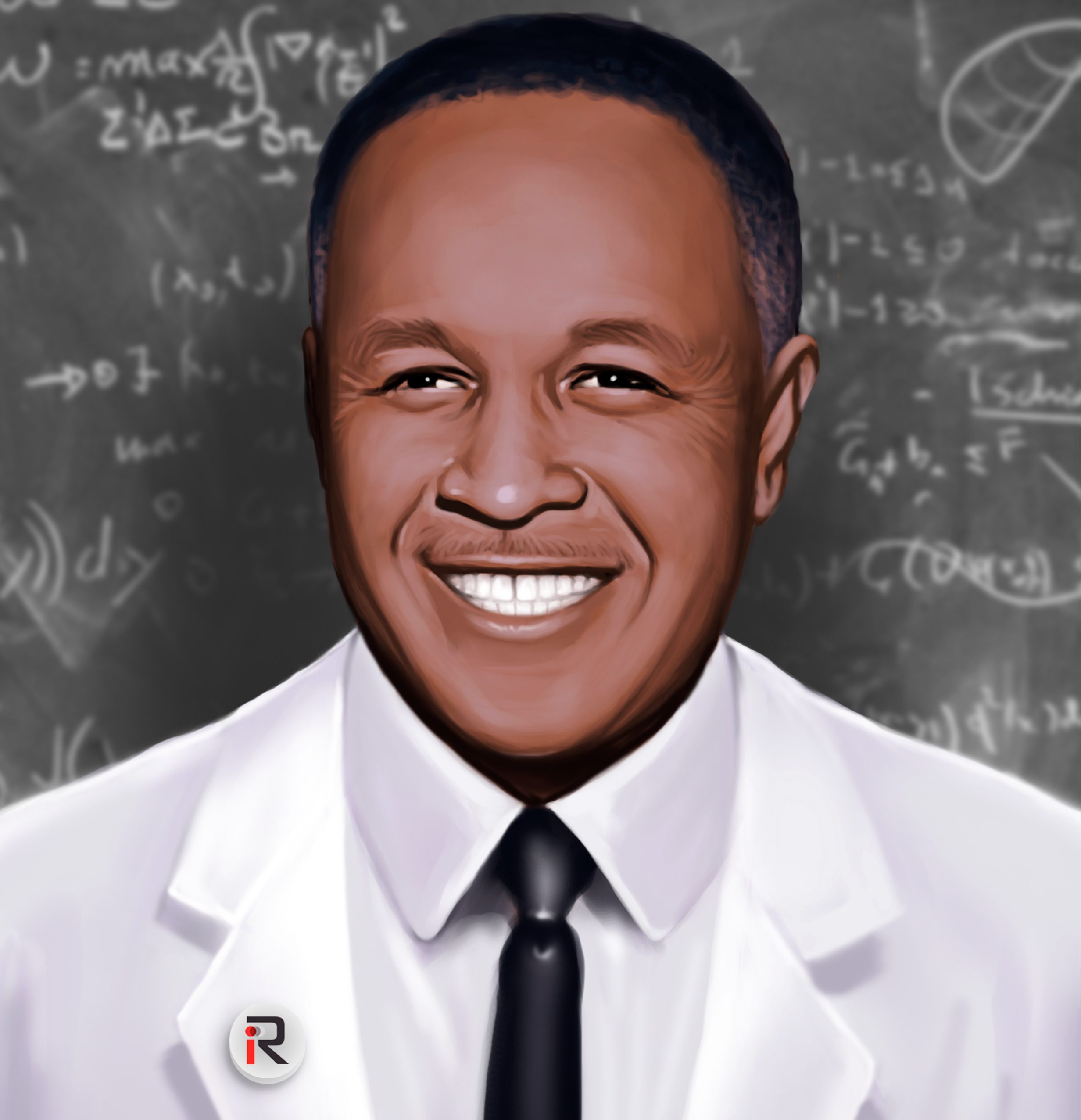African Americans living in Alabama, and the rest of the south grew restless, this would start the Great Migration out of the south. Southern African Americans moved to northern cities as well as the west coast. Between 1915 and 1920, 1 million African Americans moved to the North; another 1 million moved to the North and West in the 1920s & 1930’s, which was called the 2nd Great migration.
However one African American, decided to stay behind. His name was Dr. Percy L. Julian. Born in Montgomery, Alabama, on April 11, 1899, Dr. Julian is arguably the greatest scientist of all time. He was a Medical Professional, Academic, Civil Rights Activist, Chemist, and Scientist.
Percy was the grandson of enslaved Africans trapped in Alabama. His father James Julian was a mail clerk for the United States Post Office. His mother Elizabeth Lena Julian was a school teacher. Percy was the oldest of their six children.
There was no high school for African-American kids in Montgomery so Percy was forced to join Alabama State Norman School. Percy was forced to quench his thirst for knowledge at his dads library. Over the next 100 years, Julian became a black icon. He was the key figure in mastering the art of chemistry. Because of his superior intelligence, Dr. Julian skated his way through college and graduated as class Valedictorian at DePauw and he also completed graduate work at Harvard and University of Vienna.
In order to become a chemist, it was important for Percy Julian to join a graduating school; he understood that nobody would take him because of his color. But, because of the great migration, The college “DePauw” asked him to come back as a teacher of organic chemistry.
In 1916, Julian entered DePauw University, an all white liberal arts school located in Indiana. Even though Julian felt the wrath of Jim Crow, he earned a bachelor’s degree in chemistry. He also graduated Phi Beta Kappa and was first in his class. Julian was the first African American to earn a master’s degree in chemistry from Harvard University. He eventually became head of the chemistry department at Howard University. Determined to continue his education, Dr. Julian enrolled in the University of Vienna, where he earned a Ph.D. in chemistry—the fourth African American to achieve this accomplishment.
Dr. Julian received a scholarship to attend Harvard University to finish his master’s degree. Due to discrimination, the university would not allow him to pursue his doctorate degree. He completed the course within a year and graduated in 1923. During this period, he started research work on organic chemistry. Dr. Julian was rejected by prominent chemical companies because he was a black man.
Three years later, Dr. Percy Julian joined West Virginia Collegiate Institute, created for black students. The college had no infrastructure and he was the only faculty at the department of chemistry. Despite all of this, he started his research, synthesizing plant compounds like nicotine and ephedrine.
In 1928, Julian went to Washington to join Howard University, a historically black college in America. There, he designed a chemistry laboratory at a cost of one million dollar. In 1929, while still working at the Howard University, Dr. Julian received the Rockefeller Foundation fellowship. It enabled him to travel to Vienna and work under Ernst Späth, the infamous Austrian chemist, who specialized in natural products. Julian’s research at the University of Vienna led to discovery of new chemical compounds in a plant called corydalis cava. He received his Ph.D. in 1931, making him the third African American to receive a Ph.D. in chemistry.
In 1933, he and Joseph Pikl completed the total synthesis of physostigmine, a drug essential for treating glaucoma. In nature, it is found in Calabar beans and that too in a tiny amount. Dr. Julian was the first man to discover a way to turn soybeans into synthetic steroids on a nationwide scale, also discovering a process to synthesize physostigmine, which is a drug used to treat glaucoma. His research led to the process that made physostigmine readily available for the treatment of glaucoma. It was the first of Dr. Julian’s lifetime of achievements in the chemical synthesis of commercially important natural products.
What is physostigmine?
Physostigmine is used to treat glaucoma and delayed gastric emptying. It enhances the transmission of signals in the brain. Because it crosses the blood-brain barrier, it is also used to treat the central nervous system.
Physostigmine is also being explored in the treatment of Alzheimer’s disease.
Dr. Julian also invented the method of producing large amount of stigmasterol, an important steroid that contains sex hormones such as progesterone. His invention led to better treatment during pregnancy and prevention of miscarriages. In 1936, Percy Lavon Julian joined Glidden, a chemical company in Chicago as Director of Research at their Soya Division. Because nobody was hiring black people during this era, he would eventually get an offer from Institute of Paper Chemistry, located in Appleton; but could not accept it because blacks were not allowed to spend the night inside the city.
The highlight of Dr. Juliann’s life may have been when he met his wife, Anna Roselle, while employed at Howard University. They were married in 1935 and had kids, Faith Roselle Julian and Percy Lavon Julian Jr. In 1950, the Chicago Chamber of Commerce named him “Chicagoan of the Year.”
Adversity:
In 1951, Dr. Percy L. Julian and his family moved to Oak Park, Illinois. After they purchased their home, the house was firebombed by the KKK. It was attacked again in 1951 by the KKK. Dr. Julian continued his biomedical work and discovered the synthesis of the female hormone progesterone, and the male hormone testosterone by extracting sterols from soybean oil. He was also lauded for his synthesis of cortisone, which is used in the treatment of rheumatoid arthritis.
Julian Laboratories:
In 1953, he established his own laboratory, Julian Laboratories. It mainly stressed on research on steroids. He tried to create steroids from Mexican yam and invented improved version of cortisone. He also set up factories at Mexico and Guatemala. He sold the company in 1961, becoming a black millionaire. Julian sold his company for $2.3 million to Smith Kline.
In 1964, he established the Julian Research Institute, a nonprofit organization that he ran for the rest of his life. Dr. Julian, who held more than 100 patents, was also active in the civil-rights movement. In 1968, he won the Chemical Pioneer Award given by the American Institute of Chemists. In 1973, Dr. Julian became the first black chemist elected to the National Academy of the Sciences.
Accomplishments:
Percy L. Julian died of liver cancer on April 19, 1975, in Waukegan, IL. That same year, Percy L. Julian High School was established in Chicago Illinois located at 10330 South Elizabeth Street. Julian’s life was the subject of a documentary film made for PBS’s Nova series, entitled, Forgotten Genius. He was buried in Elm Lawn Cemetery in Elmhurst, Illinois. Even today, many budding scientists are inspired by his life not only for the drugs he had invented, but also for the battle he had to fight for doing what he did. In 1990, Julian was inducted into the National Inventors Hall of Fame. In 1999, the American Chemical Society recognized Julian’s synthesis of physostigmine as a National Historic Chemical Landmark. In 2011, the Albert Einstein College of Medicine named their qualifying exam preparation committee after Percy Julian.
Dr. Julian’s achievement still remains important as his work is helping therapeutic treatment of Alzheimer’s disease and scientist still use him as the reference, when it comes to combating the effects of chemical weapons. Dr. Julian is more than a great American inventor. Considering his adversity with Jim Crow America, you can make the case he is the greatest scientist America has ever gave birth to.




